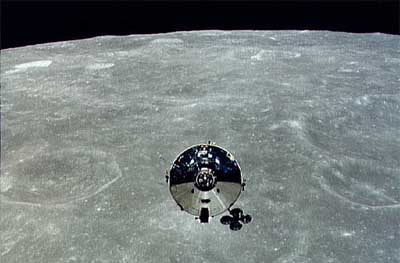Of course, building a train that could
当然,制造一列能达到如此速度的列车
reach such a speed is quite impossible.
几乎是不可能的
But we have built something very like the train.
但我们已经制造出了类似的仪器
At the world's largest particle accelerator
瑞士日内瓦的欧洲核子研究所
at CERN in Geneva, Switzerland.

Deep underground, in a circular tunnel 16 miles long,
地下深处,长达16英里的环形管道内
is a stream of trillions of tiny particles.
有一道万亿颗细小微粒所组成的粒子束
When the power is turned on, they accelerate from zero to
机器启动的瞬间,它们能从静止加速到
60,000 miles per hour in a fraction of a second.
6万英里的时速
Increase the power, and the particles go faster and faster
增加动力,这些粒子便能不断加速
until they're whizzing around the tunnel
直到粒子流能以每秒1.1万圈的速度
at 11,000 times a second, which is almost the speed of light.
飞绕管道,这一速度已极近光速
But just like the train,
但正如虚拟的列车一样
they never quite reach that ultimate speed.
它们永远不能达到光速
They can only get to 99.99% of the limit.
只能达到光速的99.99%
When that happens,
一旦达到这一速度
they, too, start to travel in time.
它们也能进行时间旅行
We know this because of some extremely
我们在一种寿命极短的π介子上
short-lived particles called pi-mesons.
观察到了时间旅行的过程
Ordinarily,
通常情况下
they disintegrate after just 25 billions of a second.
它们会在250亿分之一秒后衰变
But when they are accelerated to near light speed,
但当其加速到接近光速时
they last 30 times longer.
寿命变成了原来的30倍
These particles are real-life time travelers.
这些粒子,是活生生的时间旅行者
It really is that simple.
其实就是这么简单
If we want to travel into the future, we just need to go fast.
如果想去未来旅行,我们只需跑快点
Really fast.
非常快
And I think the only way we're ever
我认为,唯一能实现这个速度的地方
likely to do that is by going into space.
就是外太空
The fastest manned vehicle in history was Apollo 10.
阿波罗10号是史上最快的载人航天器
It reached 25,000 miles per hour.
达到了时速25000英里
But to travel in time,
但若要实现时间旅行
we'll have to go more than 2,000 times faster.
我们还需比这一速度快上2千倍
And to do that, we'd need a much bigger ship,
因此,我们需要一艘更大的飞船
a truly enormous machine.


